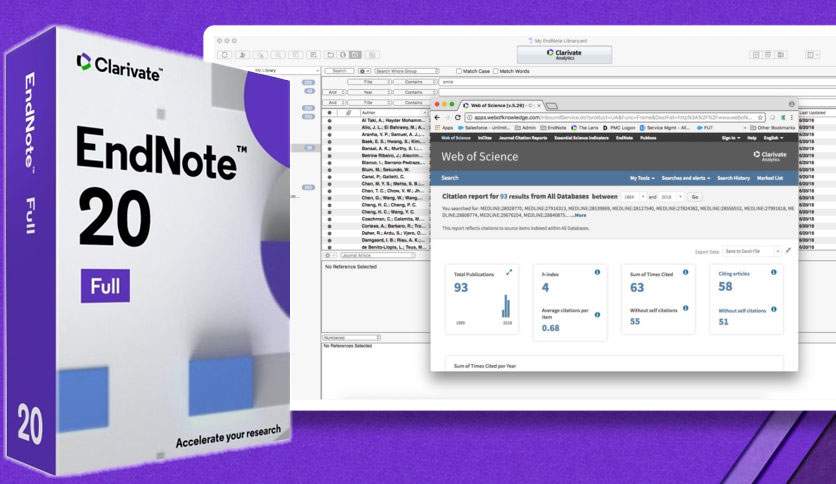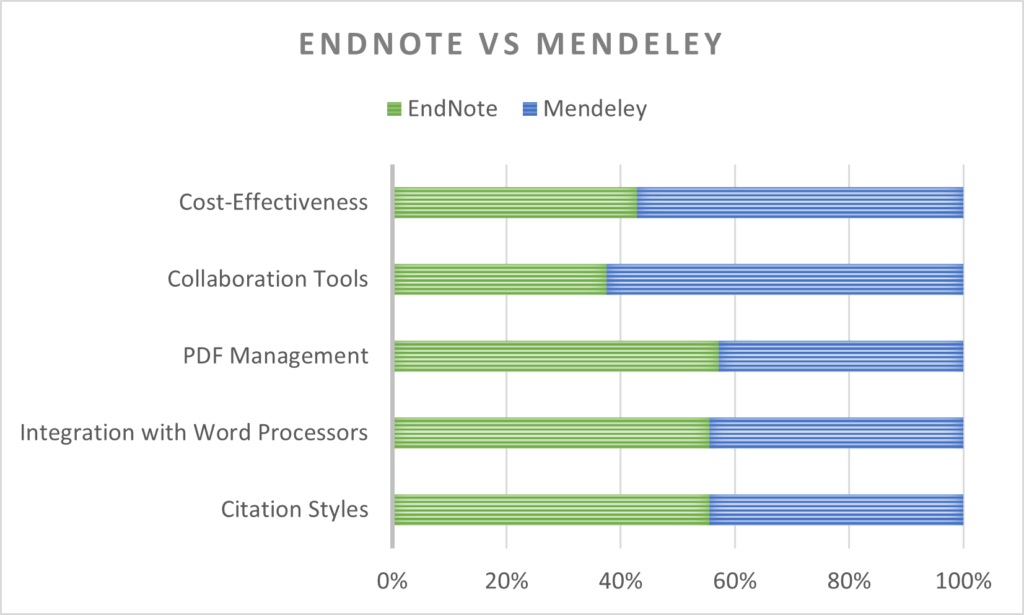Mendeley vs EndNote: Deciding the Best Tool for Researchers
EndNote and Mendeley are helpful tools for researchers. They organize citations, bibliographies, and help researchers collaborate. While both serve the same purpose, they cater to different needs. Researchers can compare their features and user experiences. They can then choose the one that suits them best.
Mendeley Overview
Users know Mendeley for its user-friendly interface and promotion of collaborative research. Its easy-to-use interface allows users of all levels to manage their references . The platform’s social networking features promote collaboration and knowledge sharing among peers. Researchers can share libraries. They can annotate PDFs together. They can stay updated on the latest trends in their field. They can do this through Mendeley’s suggestions.
Mendeley’s PDF tool lets users highlight and comment on articles in their library. This makes it easier for researchers to take notes. It helps them gather insights while reviewing articles.
Mendeley offers a solution for reference management and collaboration. But, it may not meet the needs of users. They want the extensive citation style customization and library features that EndNote provides. Also, Mendeley’s citation styles are comprehensive. But, they might not cover the breadth and depth in EndNote.

EndNote Overview
EndNote is a strong tool for managing references. It is designed to handle complex research projects and offers deep citation management. EndNote supports more than 7,000 citation styles. This helps when publishing in various fields. It works with word processors like Microsoft Word. It works through the “Cite While You Write” feature. This makes it easier to add citations. It also speeds up writing by making bibliographies.
One of EndNote’s best features is its sync. It lets researchers access their libraries on many devices. You can use this software for reviewing and adding notes with its advanced PDF tools. Researchers working on complex projects can benefit from EndNote’s customization options. They can control the organization of their libraries.
Yet, EndNote’s comprehensive feature set comes with a learning curve. New users might find the software’s extensive options and functionalities daunting. Also, EndNote costs more than some of its competitors. This can be a barrier for researchers or small teams. They lack institutional support.

Comparision: Mendeley vs EndNote
The user experiences of EndNote and Mendeley have both similarities and differences. They reflect the strengths and limits of each platform. Here’s a detailed comparison based on the aspects highlighted for EndNote:

Efficient Reference Management
Mendeley also gets praise for its reference management. People especially like its easy way of importing references. You can do this through browser plugins and by dragging and dropping PDFs. EndNote is celebrated for its depth. Mendeley is appreciated for its ease of use in organizing and accessing references. This makes it a strong contender for those who value quick setup and simple management.
Time-Saving Features
Mendeley has its own “Cite While You Write” for Microsoft Word and LibreOffice. It saves time by simplifying the citation process. But, EndNote offers more citation styles and deeper features for complex documents. In contrast, Mendeley excels in collaborative writing. This is thanks to its cloud library sharing. It updates references among co-authors.
Learning Curve
Mendeley’s interface is user-friendly. It is easier to navigate for new users than EndNote’s. This makes Mendeley easy to use. It’s especially good for those new to reference management software. It’s also good for those who want a simple setup without losing important features.
Collaboration and Synchronization
EndNote is great at syncing across devices. But, Mendeley goes further. It focuses on its social networking aspect. It lets researchers connect with colleagues, find peers’ public libraries, and join discussions. Mendeley’s focus on community sets it apart. It has effective library sharing and sync features. This makes it a highly collaborative tool. But, EndNote’s strong sharing permissions may offer more control for complex projects.
PDF Management
Like EndNote, Mendeley has strong PDF management features. It can read, annotate, and highlight documents in the library. Mendeley’s seamless integration of PDFs with reference data is highly valued. It keeps research workspaces cohesive. But, some users might find EndNote’s advanced PDF organization and search better.
Cost Concerns
Mendeley has a free core version. It also offers premium subscriptions for more storage and features. This setup addresses cost concerns better than EndNote. This model makes Mendeley accessible to individuals and small teams. They don’t need institutional support. It gives a competitive edge for those sensitive to software costs.
| Feature | EndNote | Mendeley |
|---|---|---|
| Cost | Upgrade: $125 Full: $275 Student: $150 | Free basic plan Premium plans available |
| User Interface | More complex Steeper learning curve | User-friendly Intuitive design |
| Citation Styles | Over 7,000 styles Highly customizable | Thousands available Less customizable |
| Integration | Word, Apple Pages “Cite While You Write” | Word, LibreOffice Browser plugins |
| Collaboration | Library sharing with teams | Social networking features Group libraries |
| PDF Management | Organize, annotate directly in library | Read, annotate PDFs Sync annotations |
| Synchronization | Across multiple devices | Cloud-based sync across devices |
| Research Discovery | Search online databases directly | Recommendations based on library |
| Ease of Use | Suitable for complex projects | Ideal for new users and collaborative projects |
| Access and Mobility | Desktop and web versions | Desktop, web, and mobile apps |
| Data Privacy | High level of control over data | Free version with essential privacy options |
| Community and Networking | Focused on individual and team research | Strong emphasis on community and research sharing |
Synthesizing User Experiences
Both EndNote and Mendeley offer distinct advantages. These cater to the diverse needs of academics. EndNote has many advanced features and does comprehensive citation management. These make it a powerhouse for serious research. But, it has a steeper learning curve and higher cost. Mendeley emphasizes user-friendliness, collaboration, and affordability. It is an inclusive platform that fosters a sense of community among researchers.
In the end, the choice is between EndNote and Mendeley. It depends on user priorities. These include their research’s complexity. They also include how much they need to collaborate and budget limits. Each software has carved out a niche in academia. They show that reference tools can be both powerful and easy, depending on the user’s needs.
Conclusion: Mendeley vs EndNote
The choice between EndNote and Mendeley depends on the researcher’s workflow. It also depends on how much people collaborate. It also depends on how complex managing citations is. EndNote stands out for its many features and customization options. It caters to researchers who need detailed control over their references. Mendeley has a user-friendly interface and collaborative features. They care more about ease of use and community than advanced citations.







